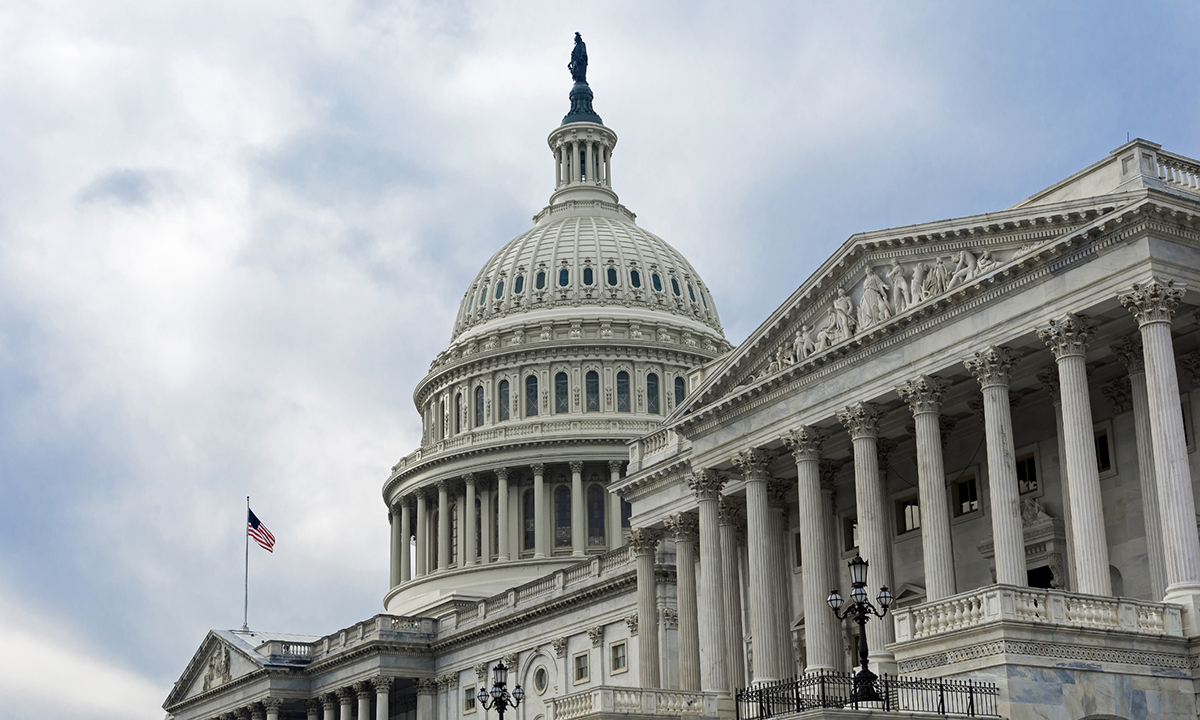D.C. Is Invested in Its Schools. Congress Wants to Cut $350M from Their Budget
Giles: Members of the House must follow the Senate's lead and protect D.C. students, teachers, schools & the services that support academic excellence

Get stories like this delivered straight to your inbox. Sign up for The 74 Newsletter
Washington, D.C., has much to be proud of. D.C. serves approximately 100,000 public school students and has invested heavily in its schools, using local dollars to ensure teacher salaries are among the highest in the country — 22% more than the national average.
D.C. has built a thriving system of public school choice, with strong options for parents at both D.C. Public Schools and public charter schools. The city was ahead of the curve in adopting universal pre-kindergarten in 2008, providing parents with free public education for their 3- and 4-year-olds long before it was widely accepted. Last year, D.C. continued to see steady student enrollment growth, defying national and regional declines. With half of students identified as economically disadvantaged and the vast majority being children of color, D.C. leads the nation in academic recovery, ranking first in math and reading gains from 2022 to 2024. While challenges remain, D.C.’s public education system is delivering results and making significant progress.
Yet, in the last few weeks, D.C. students have faced a series of devastating setbacks. District leaders sounded the alarm Feb. 28 about a massive $1 billion revenue shortfall driven by the recent layoffs of thousands of federal workers. Days later, the Department of Education workforce was slashed in half, jeopardizing essential student services and research and shifting agency priorities away from protecting vulnerable children — many of whom live in the District. Then, Congress passed a continuing resolution that included $1.1 billion in spending cuts to D.C.’s fiscal year 2025 budget, gutting local government support mid-year to its schools and students.
While the Senate passed a standalone bill to protect current-year funding, that measure is in the House, where its fate remains uncertain.
These spending cuts would have a devastating impact, slashing $192 million from D.C. Public Schools and $166 million from public charter schools’ operating budgets. Some schools could see mid-year budget cuts of over $1 million, affecting staff salaries and education programs. In some cases, schools could have to close, laying off teachers and exploding class sizes in buildings that remain. Schools and educators have worked hard to implement research-based interventions to address pandemic learning loss, but schools need stable funding to build on the recent academic gains.
On top of the harm to schools, students and educators would also feel the effects of simultaneous cuts to services for individuals and families experiencing homelessness, and first responders like Fire and Emergency Medical Services and the Metropolitan Police Department.
These proposed cuts follow deep reductions at the Department of Education, jeopardizing federal student aid, the Office for Civil Rights and the Institute of Education Sciences. These rollbacks weaken federal protections for vulnerable students in D.C. and across the nation who now face an uncertain future. It’s the students who need the most help who will suffer the most.
I see firsthand the impact of policy decisions on students, parents and educators every day. As executive director of an advocacy organization fighting for an equitable public education system for all students in Washington, D.C., my work is grounded in listening to families and communities to inform our advocacy to secure the resources students need to succeed. We’re fighting for funding equity across schools, full support for science of reading instruction, a comprehensive math plan to ensure all students have access to high-quality instruction and stronger pathways to college and career.
But when Congress interferes with the District’s local decision-making, it pulls the focus of elected leaders away from the real work of ensuring all children have access to the programs and services they need to compete in today’s world. Teachers fear losing their jobs. Students become afraid they’ll lose their favorite teacher. Schools plan for worst-case scenarios like closure, knowing D.C. is uniquely vulnerable to Congress’s whims.
D.C. has more residents than two states, yet its people pay federal taxes without having voting representation in Congress. That means lawmakers with no accountability to D.C. voters can slash funding for the schools — without residents’ consent.
Yet, in an inspiring act of community strength, D.C. residents have shown that when they organize, they can win. Members of the education reform community all over D.C. and the country have taken action, sending 15,000 letters to Congress and meeting with key senators and staffers to explain the impact of the spending bill on D.C. schools and essential services. Thanks to the leadership of Mayor Muriel Bowser, Rep. Eleanor Holmes Norton, the many D.C. leaders who flagged this issue and ensured the city made its voice heard and the hundreds of courageous students and advocates who mobilized, the Senate responded, passing a standalone bill to protect D.C.’s Fiscal Year 2025 budget. This was a victory, but a fragile one.
The fight moves now to the House. With schools making real progress, D.C. students need stability, not setbacks. D.C. residents urge the House of Representatives to follow the Senate’s lead and protect D.C. students, educators, schools and the essential services that support academic excellence, teacher stability and student success. Will Congress stand by and let this progress be undone, or will it protect D.C. students?
Get stories like these delivered straight to your inbox. Sign up for The 74 Newsletter

;)
